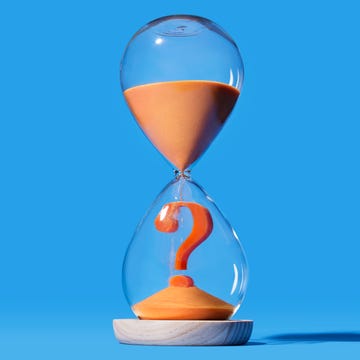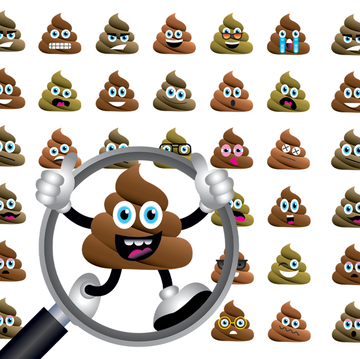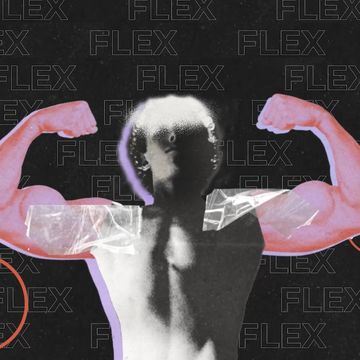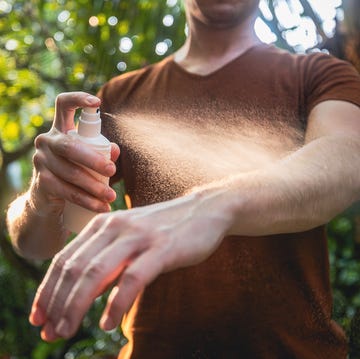MANY MEN WILL experience some type of hair loss by the time they reach 50. If it bothers you, you can reach for one of the many treatments that can help receding hairlines, general hair thinning, or baldness. One of those is the medication finasteride.
“Finasteride is pretty regularly prescribed for male pattern hair loss or a genetic inheritance of hair loss in men,” says Anthony Rossi, M.D., a dermatologist and founder of Dr. Rossi Derm MD Skincare in New York City. “It’s been a mainstay of treatment for quite some time.”
Better known by its brand name Propecia, finasteride is an oral medication that’s approved by the Food and Drug Administration to treat hair loss. It’s been shown to slow additional hair loss in 80 percent to 90 percent of men and may spur hair regrowth, according to the American Academy of Dermatology.
“I recommend the medication when a patient presents with advanced hair loss at a younger age or significant hair loss in a short period of time, such as six months to a year,” says Hardik Doshi, M.D., lead surgeon of hair restoration at Ample in New York City.
Finasteride—which is also approved to treat enlarged prostate symptoms under the name Proscar—can be used alone or in combination with other hair loss treatments, like platelet-rich plasma, topical creams, or minoxidil (Rogaine), Dr. Rossi says. A dermatologist can help determine which treatments will work best for you.
While finasteride is safe and effective, there are a few things men should know about taking it. One is that it can take about three months before you’ll see results, and you have to take it long term, Dr. Doshi says. It can also cause some side effects.
How does finasteride help with hair loss?
Finasteride is a class of medication known as 5-alpha reductase inhibitors, Dr. Rossi says.
The scalp contains the enzyme 5-alpha reductase, which converts testosterone to dihydrotestosterone (DHT), he explains. DHT is responsible for hair loss (and other things, like prostate growth, acne, and facial hair).
“DHT shrinks hair follicles on the scalp, shortening their growth phase and leading to thinner, finer hair,” Dr. Doshi explains.
Finasteride blocks the conversion of testosterone to DHT, decreasing the levels of DHT circulating in the body, he says. “With less DHT floating around, hair follicles are less likely to shrink. This can slow down hair loss and, in some cases, even encourage new hair growth by extending the growth phase.”
It’s not a magic bullet, however, Dr. Doshi emphasizes. Results take time, up to a couple of months, and hair loss can return if you stop taking the medication.
What’s a typical dosage?
For hair loss, doctors recommend taking 1 milligram of finasteride a day, says Dhaval Bhanusali, M.D. of Hudson Dermatology and Laser Surgery in New York City. The dosage will be different if you’re taking it for an enlarged prostate.
“You really take it indefinitely,” once you start taking finasteride, Dr. Rossi says.
The benefit is that if you start taking it at the early signs of hair loss, it can stop any future hair loss and help regrow hair, he adds.
Finasteride Side Effects
Finasteride can bring some side effects, but that’s true with any medication, Dr. Bhanusali says. While the risk of side effects is low and most men don’t experience any, doctors educate patients about any problems that might be connected to taking the drug, he adds.
These are the most common side effects to know about:
Sexual dysfunction
Sexual side effects are the most common, Dr. Rossi says. This might include erectile dysfunction, low libido, and a decrease in sperm quality, Dr. Doshi says.
Most men didn’t experience any adverse sexual side effects in clinical trials, Dr. Doshi says. The side effects are usually minor for those who do get them.
Mood changes
Some patients report mood changes and depression when taking finasteride, Dr. Rossi says. “We do want to tell people if you feel like you’re experiencing that, you should let us know and definitely stop taking the medication.”
Research shows that anxiety and depression when taking finasteride are more common among people who have a history of mood disorders, anxiety, or depression, Dr. Bhanusali adds.
Dizziness
Confusion, faintness, dizziness, or lightheadedness, especially when getting up from sitting or lying down, are other side effects that some individuals experience. Dr. Rossi says if you experience these, you can usually lower your dose, but talk to your doctor first.
Breast tissue growth
Gynecomastia, or enlarged breasts in men, is another side effect that sometimes comes up, Dr. Bhanusali says. This might include swelling or tenderness in their breasts, along with increased size, lumps, or nipple discharge, according to MedlinePlus.
What to Do If You Experience Side Effects
Talk to your doctor immediately if you experience any side effects after taking finasteride—especially seek medical attention if you develop a rash, hives, facial swelling, or difficulty breathing.
Your doctor might lower your dose or tell you to stop the medication and recommend an alternate treatment for hair loss, Dr. Bhanusali says.
“Even if the symptoms are very mild, it’s critical to have them examined and dealt with,” Dr. Doshi says. While finasteride is safe, your concerns about side effects are legitimate, Dr. Rossi adds.














